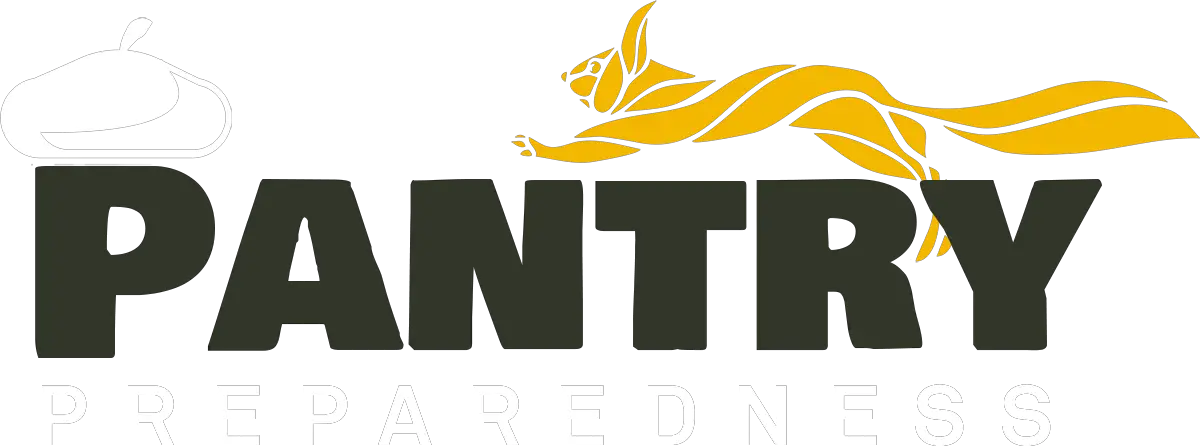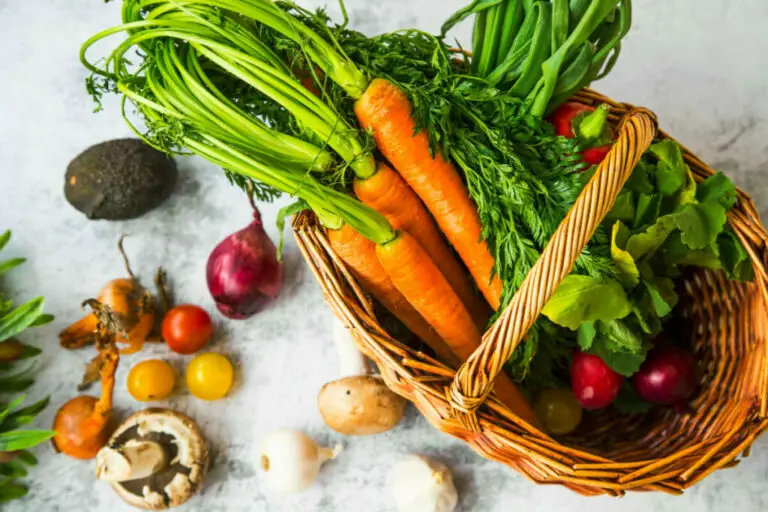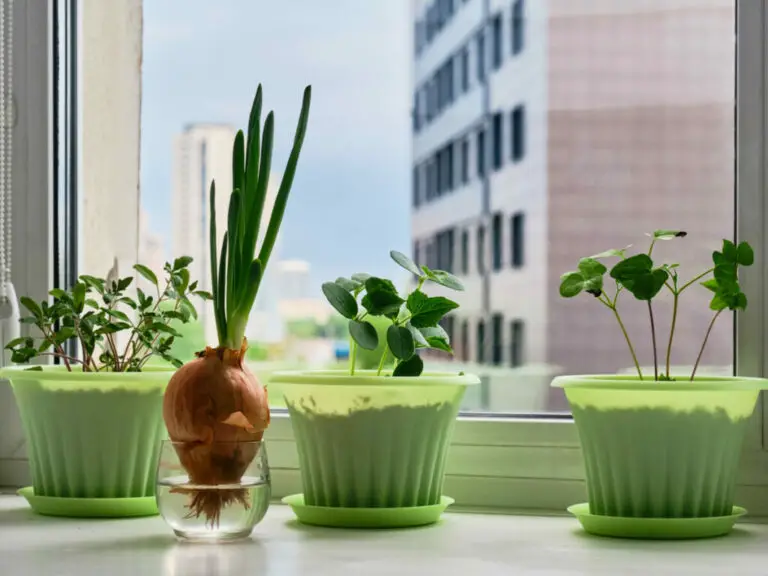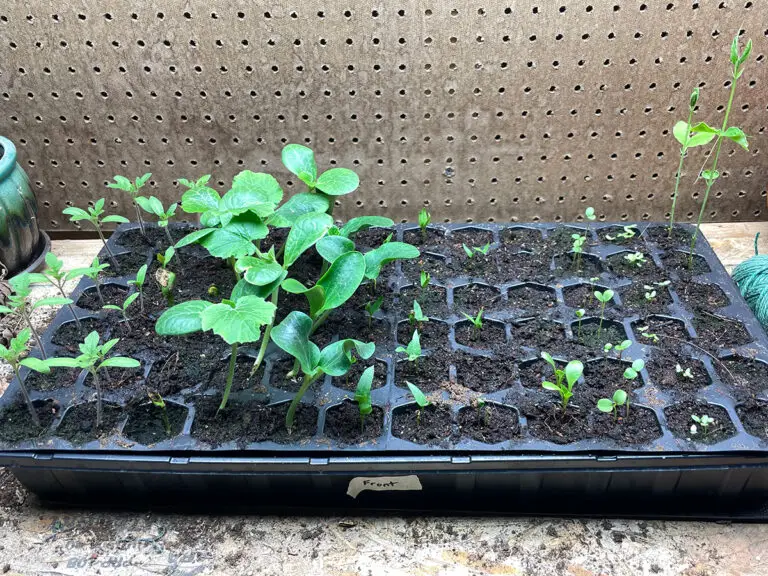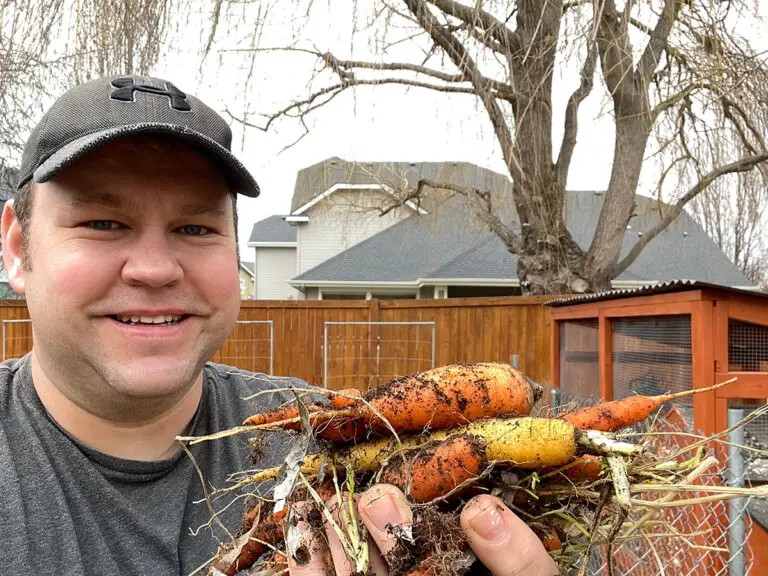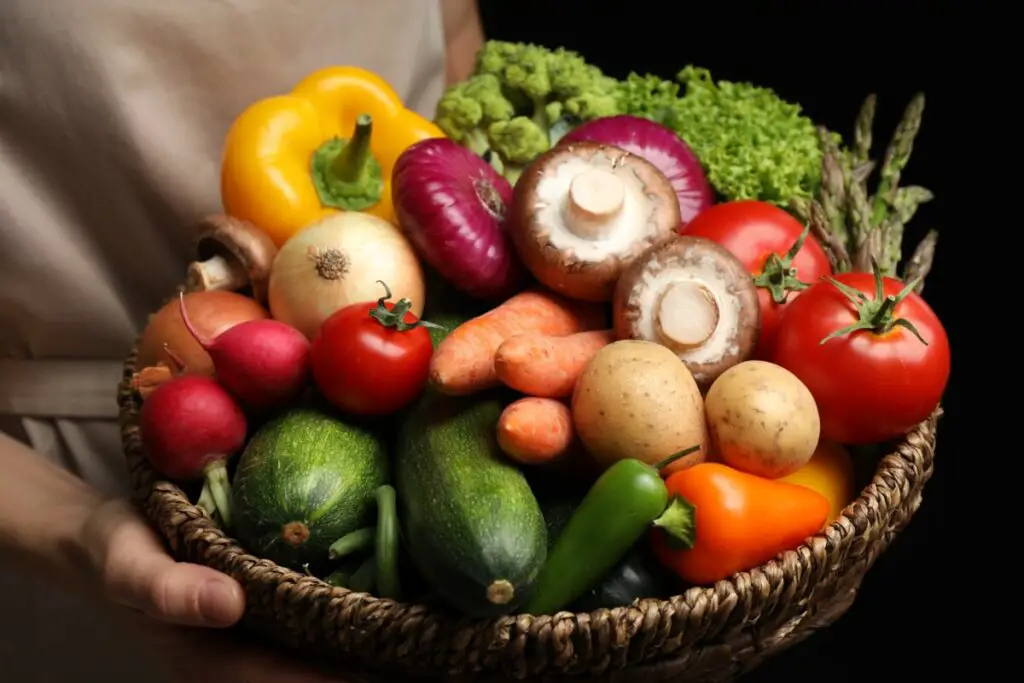
Gardening is a great hobby if you have a piece of land to grow something on. But sometimes, you just might not have the amount of space required to grow as many vegetables or as much produce as you would like to. After all, not everyone lives on a farm or in a mansion with lots of land. Especially if you are growing plants for the purpose of eating or selling them, then the yield is everything when garden space is limited.
This article will examine some great choices for those who want to maximize the output of their small garden. Some of them are grown on trellises, some are simply organized in a way that maximizes space to output, and others produce a high amount of produce from a single plant. Some of these plants even offer all three of these good qualities, but all of those listed are good bang-for-your-buck choices.
1. Herbs
Herbs, typically used as an addition to fancy dishes or even as a health supplement, are a great high-yield and low-space addition to a small garden. They are also very easily grown in pots or in window gardens, or even indoors in your kitchen. Some of the best herbs to consider are:
- Mint is great both when used to make tea or as a garnish on deserts
- Dill is delicious when used in soups, with salmon, or even with various vegetables like carrots and potatoes
- Parsley is another great herb that is used to make pesto, used in a variety of soups and stews, and makes for a beautiful garnish
- Lemon balm is deliciously lemony and is great in both salads and tea
- Rosemary is great in various stews and paired with several different roasted types of meat
- Basil is a delicious herb that is used in a huge variety of recipes and salads
2. Garlic
Garlic is sometimes considered an herb but bears mentioning since it grows very differently compared to many other types of herbs. Garlic is both easy to grow and great for planting in a pot. There are three types of garlic to consider growing: soft neck, hard neck, and elephant. Hardneck garlic produces 6-10 cloves per plant and can survive cold climates, soft neck varieties can be braided together, and elephant garlic is technically a leek but has a nice mild garlic flavor.
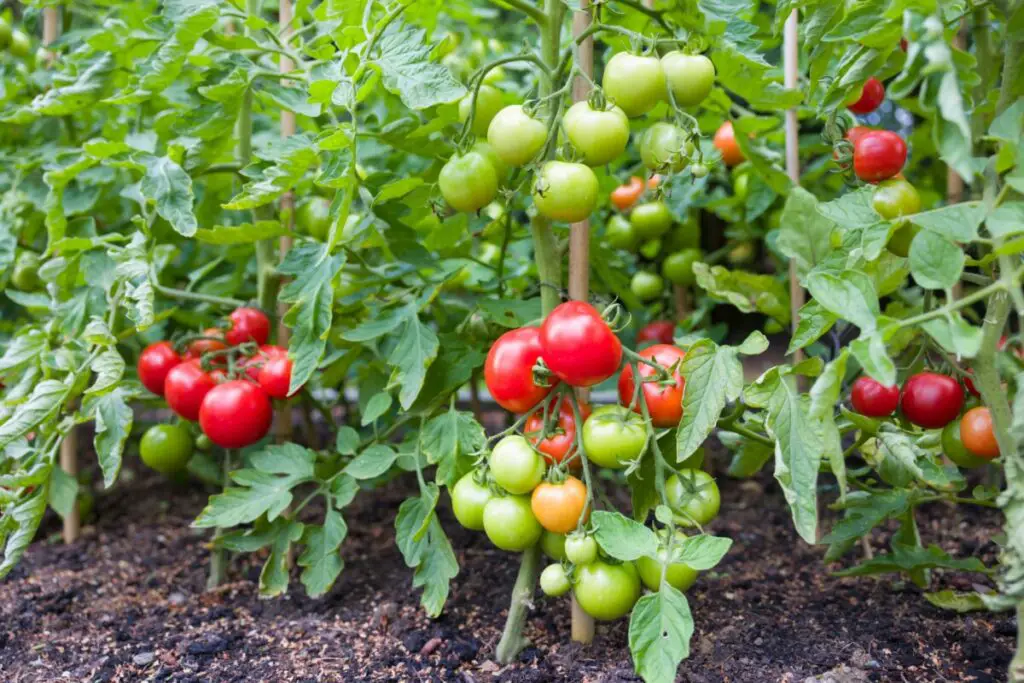
3. Tomatoes
Tomoates are an excellent choice for those with small gardens or whose gardens may even be located indoors. One reason is that they can be planted in a pot or hung from the ceiling in a pot, which saves a ton of space on the ground for other plants. Tomato plants often yield several tomatoes by themselves, making them very high-yield. Here are a few things to keep in mind if you want to grow tomatoes in a pot:
- Tomatoes love the sun! They should get at least 6 hours but as many as 8-10 hours of sunlight each day
- The pot should be filled with loose soil that drains well
- Choose a pot that is at least 20 inches in diameter so that the roots have space to grow
- The soil should be kept moist
- If you choose a very tall variety, you may need to use stakes to keep your tomato plants from falling over
Now, when choosing a variety to grow in your garden, you’ll want to keep a couple of different things in mind. There are two categories of tomato plants that describe how they grow. For a smaller garden, you will likely want to grow determinate varieties of tomatoes. These are the kind that will grow straight up with a trellis or stake and typically grow a few feet tall. The indeterminate variety tends to grow more spread out, making it better for large rather than small gardens.
Good varieties to grow in a pot include:
- dwarf tomatoes
- bush tomatoes
- cherry tomatoes
There are many different kinds of tomatoes that can be grown well in smaller spaces. Depending on the location and weather of the available gardening space, different kinds of tomato plants could be more successful than others. Growing conditions impact how well plants can grow, but some species are more capable of thriving in a less ideal environment.
4. Pole Beans and Peas
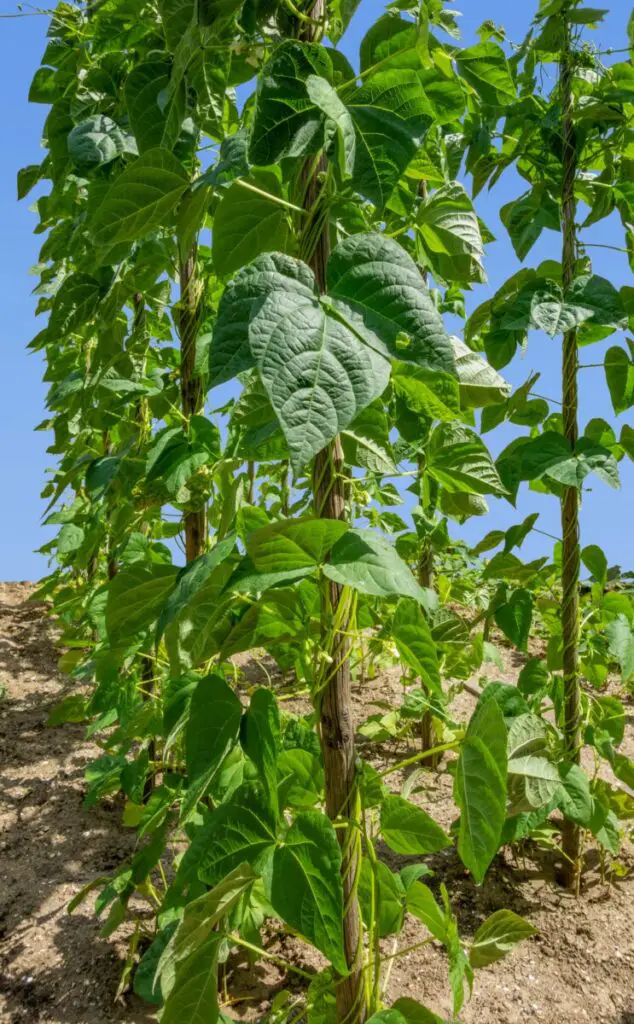
Pole beans and peas are great because they yield vast amounts of fruit and can be grown vertically on poles and trellises. Because these plants can grow to be extremely tall, you can harvest a ton of beans while only using a small patch of ground! A teepee-style trellis can save even more space than a traditional one, and also has the benefit of being super stable and self-supporting. One fun idea for growing beans in a way that will save space is to plant them around a corn stalk’s base, at which point the beans will grow around the corn. These two vegetables are known to grow well beside one another without hindering the growth of either plant, making them ideal for gardening in a small space.
Some of the best pole beans to grow in a small garden include:
- Lazy Housewife
- Blue Lake Stringless
- Romano Pole
- Kentucky Wonder Pole: definitely one of the most productive varieties of pole beans
- Purple Podded Pole: a super high-yield variety with a unique color
As far as other benefits go, pole beans are a great choice for a small garden because they are better-tasting than bush beans and have a wider harvest window.
5. Squash
Butternut squash, buttercup squash, banana squash, and many more squash varieties can bring a lot of delicious flavors to your food and a great harvest to your garden. While each of these varieties is very high-yield, they tend to spread out a lot, so they aren’t the densest-growing plant on this list. Pumpkins, technically both a type of squash and a type of gourd, are an excellent form of squash that can be grown on a trellis if you opt for one of the miniature varieties. Some of the best miniature varieties for even the smallest of gardens include:
- Bumpkin: these little orange pumpkins are very high-yield and are great as display pumpkins
- Hooligan: orange with green and white, highly decorative
- Baby Boo: A pure white that is both edible and highly decorative, this one grows on vines
- Munchkin: this one grows on climbing vines, making it a great option to grow on a trellis
- We-Be-Little: a bright orange pumpkin
- Casperita: a larger mini pumpkin with a white outside that is resistant to disease
- Gooligan: a hybrid pumpkin that is essentially the white version of the hooligan
- Kabocha (not really a pumpkin but it looks like one)
- Small sugar pumpkins: these are excellent for making pies and other pumpkin-related desserts
Another benefit of planting pumpkins in a small garden is that they don’t have their size stunted very much when grown close together, so you can plant them and grow them in a dense pattern without it reducing your yield very much. Pumpkins are great as a way to make some money from gardening, as people buy them for baking pies, carving, and even for launching from trebuchets.
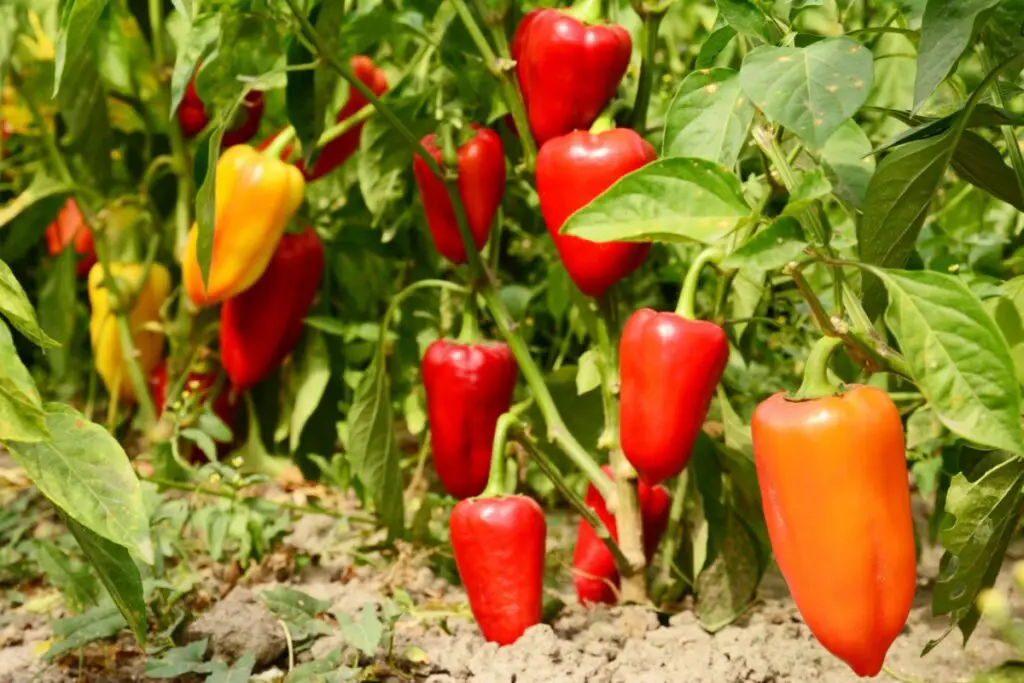
6. Pepper Plants
Pepper plants, such as bell peppers, chili peppers, jalapeno peppers, and banana peppers are excellent high-yield fruits. They come in hundreds of variations, with a wide range of peppers that are spicy, sweet, refreshing, or a mix of all three. They are very small plants, so they can grow well even in the smallest of gardens. Peppers are another type of plant that can be grown easily inside a pot, even indoors if you like.
Some of the best peppers to grow in a small garden include:
- Ghost peppers, which are very productive (as well as incredibly spicy)
- Bell Peppers are a healthy and refreshing variety perfect for making dishes like stuffed peppers
- Banana peppers are easily grown by the home gardener, and they come in both spicy and mild varieties. However, they don’t have particularly high yields.
7. Potatoes
Potatoes are a very calorie-dense tuber, and they are incredibly versatile. Good potatoes can be turned into fries, eaten as baked potatoes, or turned into a soup or stew. They also grow largely underground, so they take up little garden space. They come in many different varieties, some larger and some smaller, so there are a lot of different options when it comes to size, taste, growing time, and even color.
Do note that potatoes take a really long time to grow and they take a lot of work too (seed potatoes must be purchased, the eyes separated, the different pieces cured in the sun, planted at the right time in the spring, hilled about with soil or similar material, and finally harvested and stored). But for the dedicated gardener, they present a great and well-earned reward when they are finally done growing and can be pulled up from the ground. Potatoes are definitely worth considering purely based on their weight and calorie density per crop alone.
8. Carrots
While carrots grow individually rather than on a large plant, they can grow to be very long and are incredibly useful in cooking and baking. In a garden, about 18 carrot plants can be planted within a single square foot. Carrots grow underground, taking up little to no space above the surface level. Carrots are an excellent choice for gardeners that are working to utilize space because they can grow with other vegetables! You can plant carrots easily with other plants such as tomatoes, peas, lettuce, or onions!
9. Cucumbers
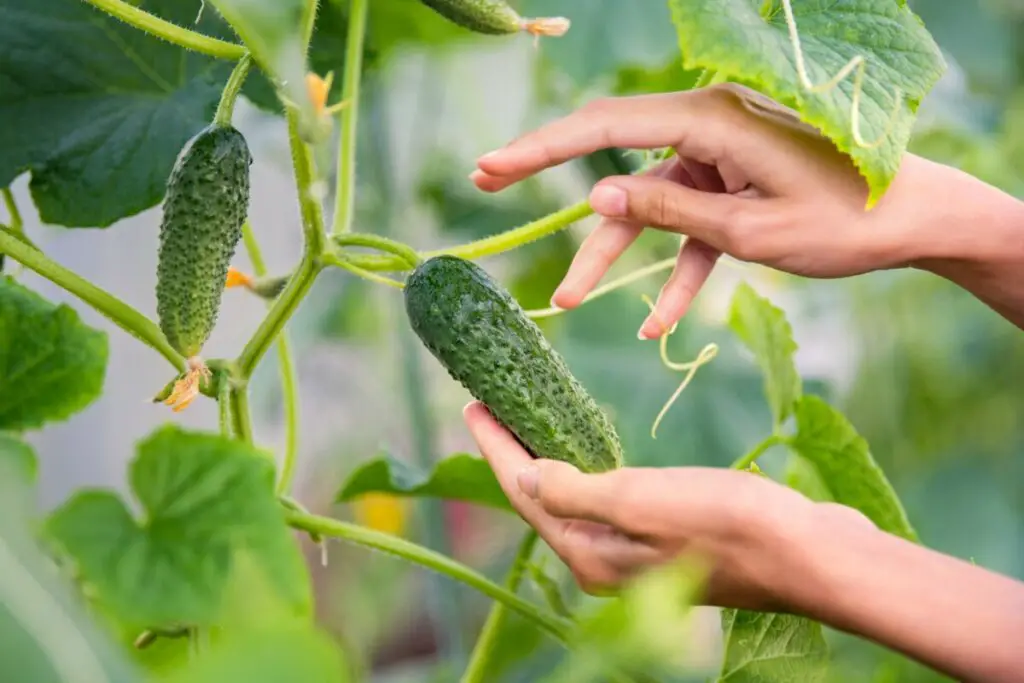
Cucumbers are a refreshing food that provides huge value compared to the cost of seeds and the work that is required to plant them. They do have to be separated somewhat far from each other if you’re not using a trellis to plant them. If you are using a trellis, then seeds only have to be spaced out around a foot apart, and this will save a ton of space. The Calypso variety is very high-yield and disease resistant and can be grown on a trellis. The Bush Crop variety is a dwarf cucumber that also has a high yield.
Cucumbers are delicious in salads, cucumber water or cucumber smoothies, and on their own with a dill or ranch dip.
10. Okra
A staple in many southern dishes, okra is a unique and delicious plant that can be cooked in a wide variety of dishes. Okra is both fast-growing and high-yield and grows in as little as only 50 days. The most productive variety is the Jambalaya cultivar. Okra seeds should be planted about half an inch to an inch deep in the ground and around 12 to 18 inches apart from each other. Okra grows pretty tall, which is why you should space each row of okra about 3 feet apart when planting.
Okra is great when fried with some cornmeal, and can be easily canned and stored long-term for later use.
11. Ground cherries
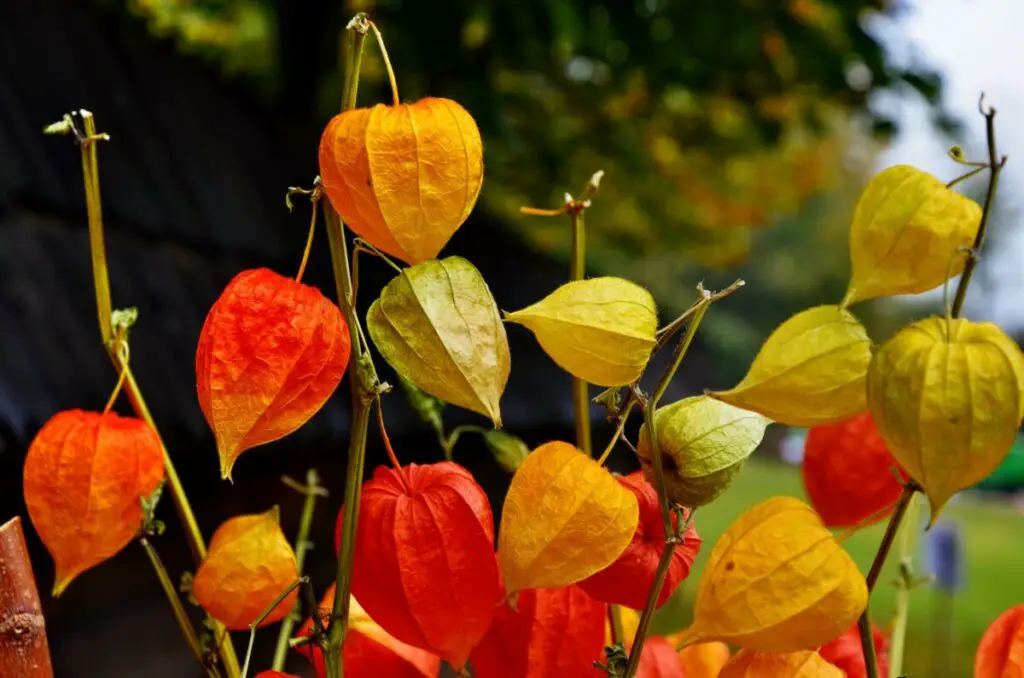
Ground cherries are a little-known kind of fruit that is great for small gardens. It can be grown in pots or just on the ground as the name would imply. These fruits are yellow-orange and they taste like a combination of a pineapple and a tomato. They aren’t actually cherries, though. When growing them in a pot, make sure the pot is at least 8 inches deep. The container you choose should also allow for excess water to drain.
Just like their real cherry counterparts, ground cherries can be used to make pie. However, since they also taste a bit like a tomato, they also go great in salsas. They can also be turned into jams.
12. Onions
One of the most common recipe ingredients ever, onions are flavorful and large vegetables. Not only are they high-yield plants, but they are also very nutrient-dense. Onion sets can be buried only 2 to 6 inches apart in 1 to 2 inches of loose soil. Transplants can be planted as close as 4 to 5 inches apart. This means you can grow onions super close together, packing a ton in just a small space.
